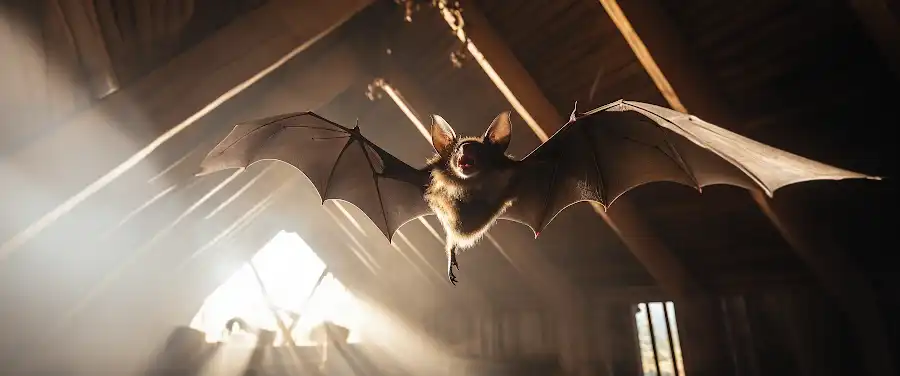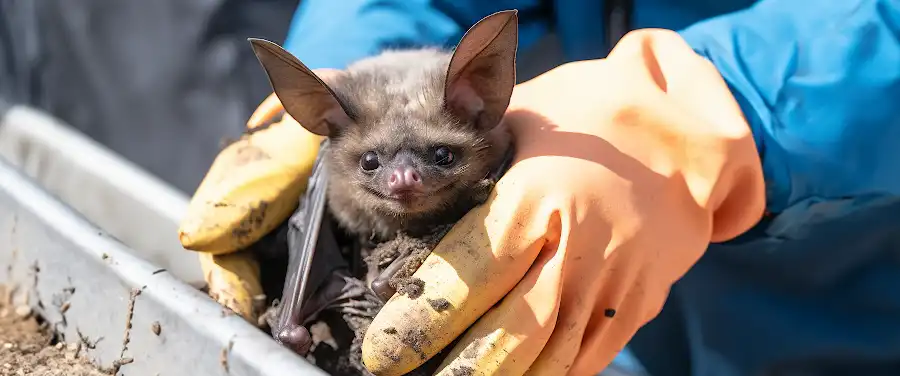
Ever watched Alfred Hitchcock’s movie, “The Birds,” and been irrationally put off by our feathered friends casually cooing on your windowsill, your roof, or your chic patio furniture? Well, we don’t mean to ruffle your feathers, but this might hit close to home. Intrusive, noisy, and at times, downright destructive: birds can be a nuisance. An avian invasion is not something anyone ever plans for. But when it happens, embracing it as a real-life Snow White fantasy is, unfortunately, not an option – mostly due to the unsolicited ‘gifts’ they tend to drop behind.
This is where the idea of effective bird control crops up. It’s not only about keeping your space clean, or about the ‘tweet-peace’ you’ve been craving. It goes beyond that. It’s about emphasizing the balance of our ecosystem and living symbiotically with nature without invading each other’s habitat. What many fail to realize, though, is that there are laws and regulations surrounding bird control. This isn’t a ‘pick up the nearest broom and shoo them away’ kind of situation. It’s shrouded in restrictions, ethical considerations, and legal frameworks.
So, what if your chirpy house guests have been wearing out their welcome, and you’re pondering about ways to handle bird control? The lines of the law aren’t meant to clip your wings, but merely to guide you on this journey. This includes everything you need to know about the bird control laws and regulations. It’s crucial to stay within the law and maintain respect for all wildlife, even when dealing with a home invasion of the bird kind. Ready to soar into the fascinating realm of bird control? Hold on tight; this journey’s about to take flight! We’re now transitioning into an important area, the laws governing bird control. Get ready to navigate the legal skies of this vital topic.
How are Birds Considered a Wildlife Nuisance?

Birds, though a captivating picture of nature’s beauty, may sometimes morph into a wildlife nuisance that raises eyebrows; a compelling issue that necessitates adequate laws and regulations on bird removal in Central Florida and beyond. This undesired transformation often stems from two key problems: urban bird issues and agricultural bird dilemmas.
Urban Bird Problems: Noise, Disease, and Property Damage
Firstly, within city settings, birds can cause quite the raucous orchestra of noise which at odd hours can ruin peaceful surroundings. Moreover, some species may carry diseases, introducing new health risks to our environment. But that’s not all. Some serious property damage awaits unsuspecting homeowners, as birds tend to leave droppings that tarnish the aesthetics of buildings and can also cause structural damage over time.
Indeed, a 2019 survey by Orlando Health, reveals an increased number of hospital visits in the metropolitan Orlando area due to bird-related health issues, thus strengthening the need for adequate bird control mechanisms.
Agricultural Problems: Crop Damage and Threats to Livestock
Turning a blind eye towards the countryside, the picture isn’t rosier. Many birds pose a real threat to agriculture, causing extensive damage to crops and also posing a potential threat to livestock through disease transmission. According to the USDA National Agricultural Statistics Service, Florida incurred crop losses exceeding $30 million attributed to bird damage in the year 2020 alone.
Taken together, these realities underscore birds as wildlife nuisance in both urban and rural settings, prompting the question of how best to manage them. While control measures are necessary, it is paramount that they comply with legal provisions governing bird removal.
For Central Florida, the pertinent laws and regulations on bird removal become a subject of keen interest for property owners grappling with these flying guests. Bearing this context in mind, it helps us transition smoothly into the next discussion about the specific birds considered pests or nuisances. Slip on those reading glasses and let’s dive in!
What Birds are Commonly Considered Pests or a Nuisance?

When most people think of birds, they imagine peaceful creatures chirping away in the early morning hours. But, did you know, there are several bird species that are often considered pests or a nuisance? Some of the most common such species include pigeons, sparrows, starlings, and gulls.
Pigeons, for instance, are often associated with urban environments where they are known to gather in large numbers, causing a variety of issues. They can damage property with their droppings, often resulting in significant cleanup costs, and potentially spread diseases.
Sparrows and starlings are small in size, but they can cause big problems. These birds are social creatures and tend to travel in large groups, leading to significant noise and mess. They are also known for their aggressive behaviors, often displacing native bird species from their habitual nests and feeding areas.
Gulls, particularly the seagull species, are notorious for their brazen behavior and attraction to human food sources. They can often be found scavenging in garbage bins and are a common sight in coastal areas, causing considerable nuisance to residents and tourists alike.
These nuisance bird species are not just problematic because of their behaviors. They also pose significant health risks. According to the Centers for Disease Control and Prevention, birds and their droppings can carry over 60 diseases, many of which are harmful to humans.
But, despite these issues, it’s important to remember – these birds, like all wildlife, are protected under certain laws and regulations. Which brings us to our key topic: the Laws and Regulations on Bird Removal.
As we venture into this topic, it’s important to understand these laws in clear context. It’s illegal to harm or kill most bird species or to remove their nests during breeding season without a proper permit. It ensures that our interaction with these species balances the necessity of bird control with the importance of preserving bird populations.
So, what does this all mean for you, especially if you’re dealing with a bird problem at home or on your property, particularly in Central Florida? Read on, as we dive into the specifics of how bird control regulations are enforced and implemented.
How are Bird Control Regulations Enforced and Implemented?

Bird control regulations, especially in Central Florida, are taken seriously. Here, these laws are not mere suggestions but rigid directives that both private individuals and businesses are mandated to obey. The enforcement of bird control regulations begins at the federal level and trickles down to your local community, creating a multi-layered, comprehensive system.
Federal involvement in bird control is derived from the Migratory Bird Treaty Act (MBTA) of 1918. This Act, upheld by the U.S. Fish and Wildlife Service, protects almost all bird species, including their nests and eggs, from harm or disruption. On a local level, the Florida Fish and Wildlife Conservation Commission safeguards the state’s bird population and habitats, closely monitoring and ensuring the adherence to bird control measures.
However, effective enforcement is not without penalties, which helps ensure compliance. Violating laws pertaining to bird control can result in severe penalties. For instance, the violation of the MBTA may lead to fines ranging upward of $15,000 or imprisonment up to six months. Similarly, the Florida Statute 828.12 declares that anyone who needlessly kills or abuses any bird not protected by law can be found guilty of a first-degree misdemeanor.
Understanding the Bird Control Penalties
To make this clearer, here’s a straightforward table showing the implications of bird control law violations:
| Law | Violation Consequences |
|---|---|
| The Migratory Bird Treaty Act 1918 | Fines up to $15,000, imprisonment up to six months |
| Florida Statute 828.12 | First-degree misdemeanor |
Naturally, you might wonder what constitutes legal bird control in Central Florida. Professional bird nuisance control services work accordingly to the laws established by Florida Fish and Wildlife Conservation, using removal methods that are ethical and humane. These professionals are educated in the complex weave of laws and regulations that protect these winged creatures, ensuring legal compliance while providing effective service.
Understanding the enforcement of bird control regulations can seem daunting. Nevertheless, it’s vital to gain a clear understanding of the role both federal and local governments play in preserving our avian neighbors’ habitats and enforcing bird control regulations. It’s only through this understanding that we can strike a balance between human convenience and the respect for wildlife.
Up next, let’s take a moment to delve deeper into the ethical considerations when handling bird control in Central Florida.
What are the Ethical Considerations for Bird Control?

Bird control brings about quite a conundrum for many. On one hand, we have the need to protect our homes, businesses, and agricultural assets from the potential damage and health risks associated with bird habitation and nesting. On the flip side, we come face-to-face with the fundamental principles of animal welfare and the dire necessity to foster an Earth-friendly, human-animal co-existence.
Ethics in Bird Control
An ethical balance must be struck when addressing bird control, where human needs are met yet animal welfare remains paramount. In the arena of bird control, ethics goes beyond simple compliance with laws and regulations on bird removal. The emphasis swings towards empathy and respect for the local avian population.
A look at ethical bird control methods often entails the non-lethal or non-invasive approaches, designed to prevent or discourage the birds without causing them harm. The main methods falling under this category include:
- Discouragement: Using scare tactics, such as decoys, sound devices, or harmless flashlights.
- Exclusion: Bird-proofing buildings or orchards using physical barriers, bird netting, or bird spikes.
- Relocation: Employing professionals to capture and release the birds in a different habitat.
It’s vital that these methods are executed correctly and safely to avoid causing undue stress, injury, or harm to the birds involved.
The Balance between Human Needs and Animal Welfare
Figuring out how to control bird populations in a humane way is a challenging task. It’s like walking on a tightrope, balancing our needs and those of the birds carefully. Perhaps understanding the importance of this balance could be made clearer with a table highlighting key factors:
| Human Needs | Animal Welfare |
|---|---|
| Damage prevention | Elimination of harm |
| Health & hygiene | Prevention of stress |
| Safety | Ethical treatment |
While disappointing to some, the truth is birds cannot be eliminated entirely nor should they be. The focus should instead be on creating an environment where humans and birds can coexist in harmony, with the necessary regulations in place to protect both entities.
Conclusionally, the cornerstone is to appreciate the vital role birds play in the ecosystem, from pest control to seed dispersion, from pollination to being a part of the food chain. It’s not just laws dictating our actions, but our responsibility as custodians of the earth.
With respect to bird control within the context of Central Florida, several bird species are protected under the Migratory Bird Treaty Act (MBTA). This underscores the need for humane and ethical bird control methods. Clearly, the balance between our needs and the welfare of these vital creatures is not a choice, but a mandatory association.
Transitioning into our next key topic, it’s necessary to delve into how these bird control methods are regulated to prevent undue harm or stress to the bird population and ensure birds’ safety and wellbeing. The question is, “How are bird control techniques regulated for animal welfare?” Stay tuned as we feed that curiosity.
Understanding the intricacies of bird control is crucial, whether you are a homeowner encountering problems with birds in Central Florida, or you just possess a keen interest in law and ecology. Entities like the US Fish and Wildlife Service and Florida Fish and Wildlife Conservation Commission apply strict regulations to ensure both the wellbeing of wildlife and the welfare of individuals. To navigate the often complex, sometimes baffling world of bird control and its associated laws, it is necessary to delve deep into the main laws and regulations on bird removal in this region.
Legal Context
The Migratory Bird Treaty Act (MBTA), one of the oldest wildlife protection laws in the United States, clearly underlines the key clauses on bird removal. Interestingly, nearly all native bird species are protected under the Act, making it illegal to harm, possess, transport, or sell such birds, along with their eggs, nests, or feathers. This is crucial to remember when dealing with bird nuisances around your property.
In addition to the national laws, Florida has its own set of rules. Florida Statutes, Section 828.12, prohibits any person to unnecessarily harm any animal, which includes birds. The Florida Administrative Code (FAC) 68A-4.001, deals with the destruction of bird nests. The latter only permits nest removal when these are not active (in other words, not containing eggs or young birds).
Understanding Wildlife Nuisance
Notwithstanding these laws, certain situations necessitate bird removal, especially when these become a nuisance or present health risks. Here, the definition of a ‘nuisance’ is key. This term refers to any wildlife behavior that either threatens human safety or causes property damage. However, the solutions to such problems must remain constrained by animal welfare regulations.
In cases of wildlife nuisance, citizens can obtain permits for the ‘take’ of nuisance birds. Nonetheless, lethal methods are generally discouraged, and must always be last resort. Precautionary steps and non-lethal methods—including using bird spikes to deter roosting and bird netting to keep birds away from certain spaces—are far more commended and often required before taking any lethal action.
Conclusion
It’s clear that the laws and regulations surrounding bird control in Central Florida are designed to maintain a delicate balance between public safety and animal wellbeing. It’s paramount to explore non-lethal bird control methods before ever resorting to more drastic measures. With a sound understanding of both the migratory bird treaty act and Florida wildlife laws, one can address bird-related issues responsibly.
The responsibility on us is heavy; hence, navigating the world of laws and animal welfare in bird control can be quite complex. Regardless, with the insights provided here, you possess the tools to make informed decisions, while respecting the balance of nature around us. Let’s commit together to endorsing responsible bird control, enabling birds and humans to coexist peacefully.
Frequently Asked Questions about Laws and Regulations on Bird Removal
Table of Contents
- How are Birds Considered a Wildlife Nuisance?
- What Birds are Commonly Considered Pests or a Nuisance?
- How are Bird Control Regulations Enforced and Implemented?
- What are the Ethical Considerations for Bird Control?
- Legal Context
- Conclusion
- Frequently Asked Questions about Laws and Regulations on Bird Removal




